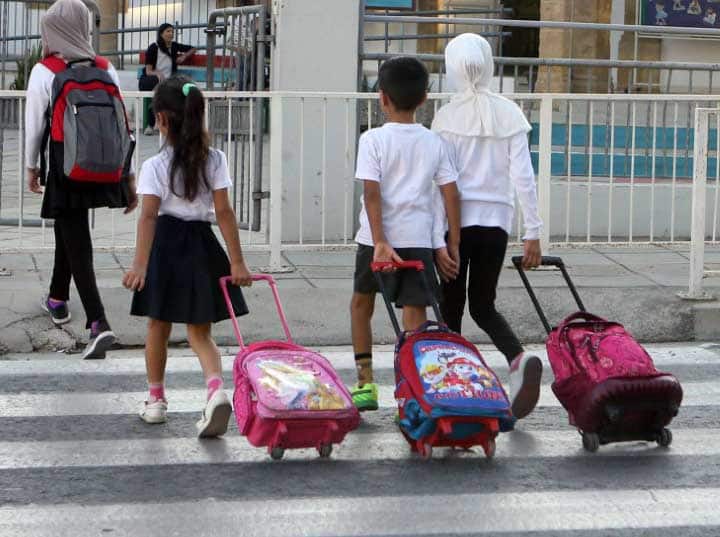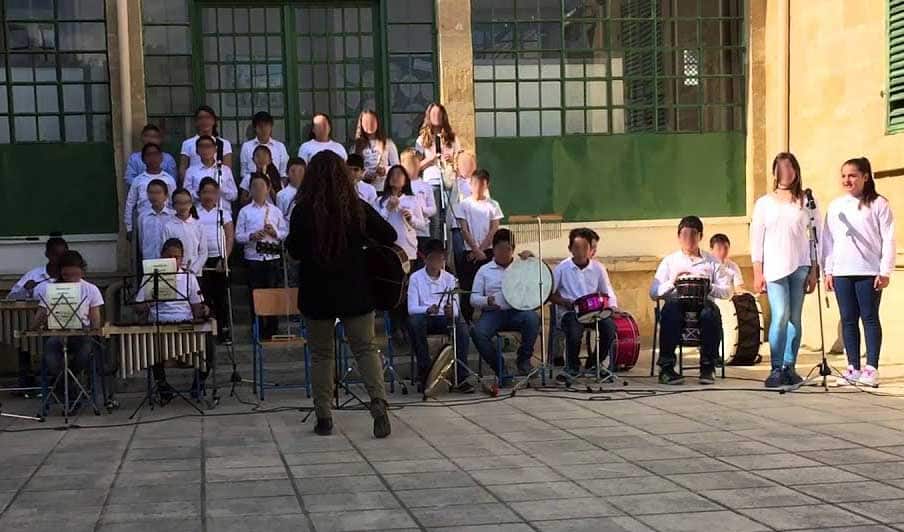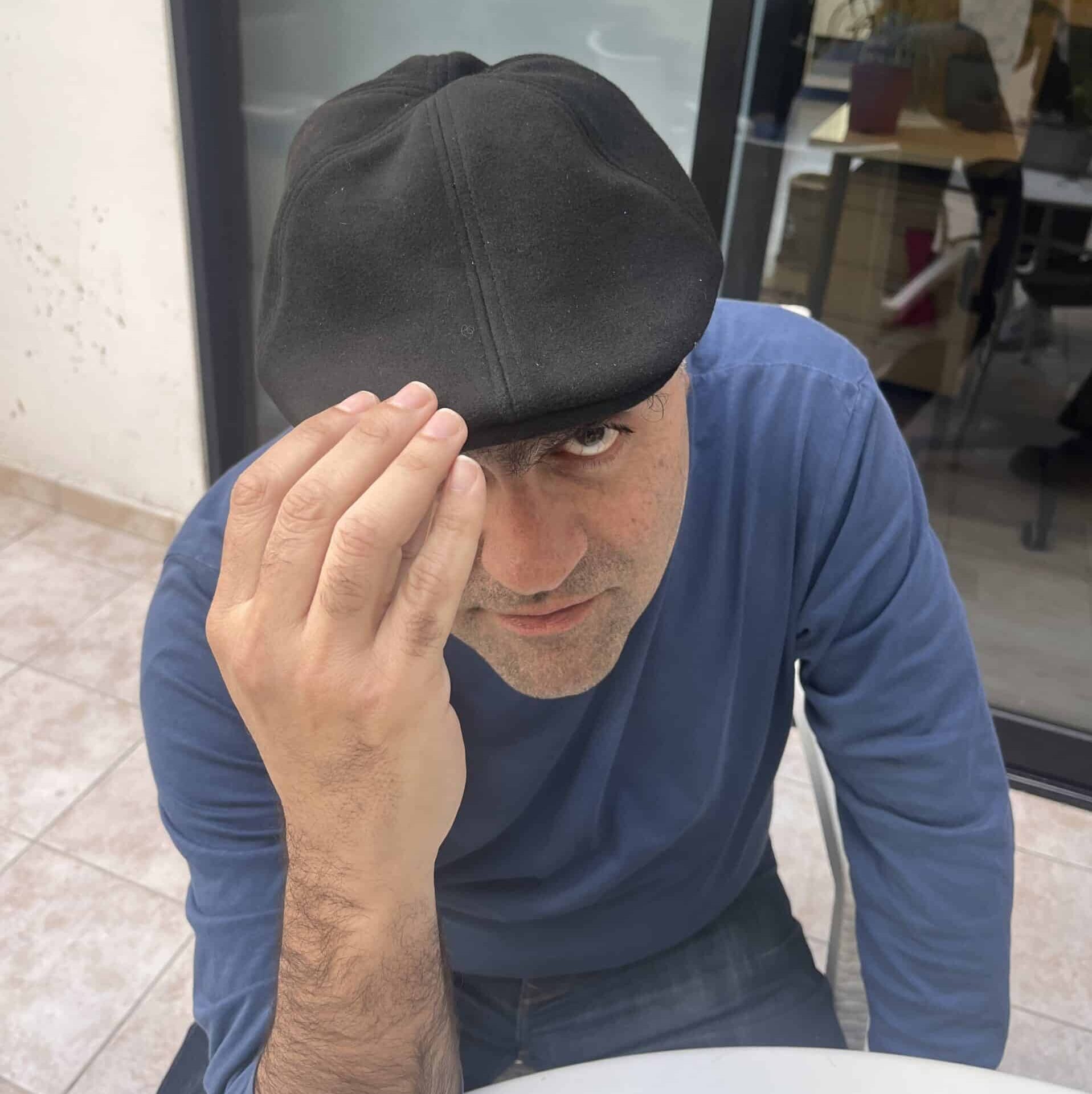Headteachers say they are coping well, but what about outside of school?
Recent figures, released in November by the Schools Board of Nicosia, show that 49.5 per cent of schoolchildren in Nicosia have a ‘migrant background’, defined by the board to mean that both parents are foreign-born and not from Greece or the Cypriot diaspora.
The board, an elected body with no connection to the education ministry, collected the data at the behest of Parliament. The 49.5 per cent figure – based on the total number of pupils, from kindergarten to high school – caused a stir but hasn’t been seriously disputed, the numbers coming straight from the schools themselves.
It’s important to note that ‘Nicosia’ means the municipality of Nicosia (i.e. the centre of the city), including many areas with low rents where migrants tend to cluster. Equivalent figures in nearby Strovolos, for instance (supplied to the Cyprus Mail by the Schools Board of Strovolos), show a mere 13.2 per cent of foreign pupils. The number in suburbs like Engomi and Makedonitissa is likely to be even lower.
Still, the fact remains that several schools in the capital (the same is surely true in other cities) are majority migrant. Is that a problem?
“We are a school with no delinquent behaviour, and without any problems,” Irini Charalambidou, headmistress of module B (kids aged nine to 11) at the Ayioi Omologites primary school, told the Cyprus Mail.
“And you know, this is a message that needs to come out. It’s not necessarily the case that a school with a lot of kids from a migrant background is a problematic school. On the contrary.”
The board figures show that 45 of 94 pupils in module B are migrants, though Charalambidou (using a broader criterion of at least one foreign parent) puts the proportion at 60 per cent. That number has been rising throughout her three years at the school, she added.
The foreign children come from all over. “We have schools with 38 different nationalities,” according to Nicos Megalemos, president of the Schools Board. At Ayioi Omologites there are Syrians, Georgians, Senegalese, Bangladeshis, and so on.
A notice board at Palouriotissa middle school (which also has around 60 per cent migrants) proudly displays the flags of 18 countries, not counting Cyprus and Greece – but most of the migrant kids are Arab speakers, especially Syrians, according to deputy headmistress Eleni Fylaktou.
Not all pupils speak fluent Greek. “If you go out on the playground, the main language spoken is English,” says Charalambidou. “Sometimes during breaktime I say, as a joke, ‘The English School is up the road. This is a Greek school’.”
Indeed, the defining feature in these schools (all of which are part of ‘Drase’, a government programme to support migrant and low-income families) is the existence of special Greek-language classes to bring foreign pupils up to speed. At Ayioi Omologites, the kids leave class for two 40-minute sessions a day. At Palouriotissa, they’re placed in migrant-only classes for the first two years, and excused from some lessons to make time for Greek.
Improving language skills seems to be the main focus – doubtless because it’s the most obvious way in which the school can help. But Syrian refugees, for instance, come with other challenges, given that the war began in 2011, meaning that a child of 12 or 13 in middle school will have known nothing else.
“Many of these kids didn’t go to school in Syria,” says Maria Chrysafini, who teaches the Greek-language course at Palouriotissa. Boys in school would be called up to the army, so many parents kept them home. “We have kids who didn’t even know what school is. They couldn’t even write, not even Arabic.”
Behavioural issues aren’t too common; most refugee kids are glad to have left a war zone for a safer place. But they tend to be lax about doing homework and obeying instructions, as if not quite comprehending the reality of their new environment.
“I tell them, ‘Don’t get up from your seat during class’, and they just get up,” says Fylaktou. “Sometimes I ask, ‘Were you allowed to get up in Syria?’, and they say, ‘No, but in Syria they used to hit us’… Maybe they feel more relaxed, since we’re not so strict.”
A visit to two migrant-only classrooms at Palouriotissa reveals quite a varied array of kids. Some speak almost no Greek, others are fluent enough to translate into Arabic for their classmates. Some say they’d like to stay in Cyprus, others miss home and their extended family.
Most intriguingly, the consensus in one class is that they have no Cypriot friends, only other kids from their home country – but the other class (of slightly older pupils) say they do have local friends, and not just in school. It’s unclear if that’s just coincidence, or a case of being older and more integrated.
One obvious question is whether Cypriot kids are racist towards the new arrivals – but both schools insist they’ve had no such incidents, though Cypriots and foreigners tend to mix less in middle school (which is always more cliquey) than primary school. Her school fosters “a culture of acceptance”, says Charalambidou – but also notes another relevant factor: “Maybe it’s because there’s [such] a large number of kids with a migrant background.”
That’s an interesting point, especially in the context of the education ministry trying to decide how best to distribute migrants – and it may indeed be that a rough 50-50 split is perhaps the optimum.
Migrant pupils are clearly more likely to be targeted – and less likely to be accepted – in schools where they’re a small minority, especially since those schools won’t have special classes to help them along. On the other hand, notes Charalambidou, it becomes hard to teach the full curriculum – which is based in Greek Cypriot culture – if they’re almost entirely migrants. “Am I going to celebrate the 28th of October, or the 25th of March?”
Enter the Ayios Antonios primary school, one of the aforementioned schools with 38 (it’s actually 28) nationalities. Out of 151 pupils, 137 have a migrant background according to the board’s figures – but in fact, headmaster Christos Tsouris told the Cyprus Mail, once you include mixed marriages the proportion is more like 99 per cent.
Tsouris, a highly articulate man who cites Abraham Maslow’s hierarchy of needs and Dimitris Christopoulos’ book If the Refugee Question Were a Problem, It Would Have a Solution in the course of the interview, pulls no punches when it comes to the issues facing his charges – though, in strictly educational terms, his points are quite similar to the other two schools.
Ayios Antonios is also a ‘Drase’ school. Here, again, the kids spend many hours a week learning Greek. Here, again, behavioural issues, while present, aren’t very common; the school is “above average” in terms of discipline, punctuality, wearing the uniform and so on.
In fact, says Tsouris, “the school is their paradise” – often the only structured and functional environment in these kids’ lives. Pupils were in tears when classes closed down during Covid.
The problems aren’t in school, they’re outside it – in low-income families with no stability and parents who are sometimes violent and often illiterate, unable to help with schoolwork even if they weren’t constantly hustling as delivery drivers or working in bakeries at four euros an hour. Some are even illegal – but their kids still have to go to school.
Tsouris tells of children reporting that they’re sleeping on the floor at home, or that electricity has been out for the past three months. One child, asked why he wasn’t eating his lunchtime sandwich (provided by the school, of course), replied he was taking it home to share with his mother and sister. At one point, the school brought in toothpaste and toothbrushes to demonstrate how to use them: “90 per cent of the kids had never brushed their teeth before.”
On another occasion, a passerby got in an altercation with one of the African kids in the playground, and called him a racist name. The boy told his teacher, who tracked the man down and reported him to his employer – a vivid illustration of the stark divide between the supportive bubble of school and the harshness of society outside it.
In the end, the most telling detail is perhaps that, even though Ayios Antonios is a ghetto school, the area around it isn’t actually a migrant ghetto.
The problem (which also exists at the two other schools) is that Cypriot parents living in the neighbourhood panic at the arrival of migrants, and take their children elsewhere – thereby increasing the proportion of foreign pupils, and isolating them even more. What’s alarming isn’t the 49.5 per cent figure, it’s the response to it.
“All that needs to happen is the acceptance by society of these pupils,” says Chrysafini. “Because in school, they’re already accepted.”








Click here to change your cookie preferences